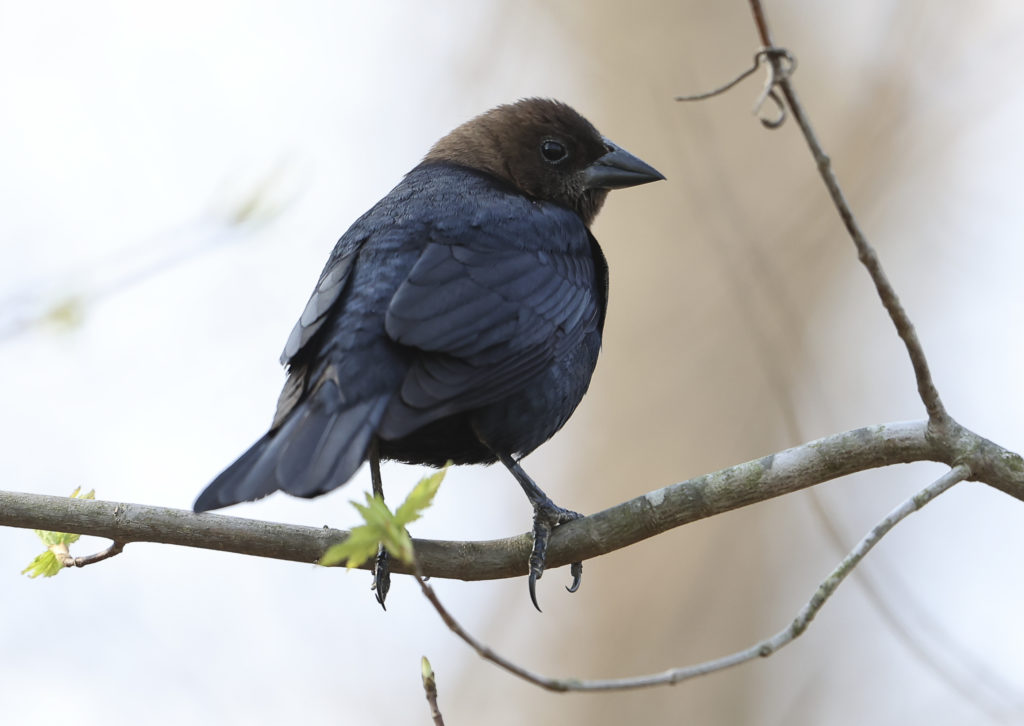Creature Feature

The Cowbird Controversy
By Wayne Bierbaum
My bluebird box is now occupied by an enthusiastic bluebird pair. There are now four blue eggs being warmed by the female and protected by the male. The male will pull hair out of the back of any squirrel that comes too close. He chases away house sparrows, starlings (frequently) and, most aggressively, cowbirds.
Brown-headed cowbirds are nest parasites. A female cowbird will hang out in an open area at the edge of a forest to watch for birds building a nest, usually smaller birds. In dense forests, they cannot easily spy on the nest building. After eggs are laid, the cowbird sneaks by, steals an egg and then lays one of her own. The cowbird egg hatches quickly, several days before the host eggs. The nest owner will then unwittingly raise the cowbirds as their own. Unfortunately, the young cowbird will crowd out or even push out the smaller rightful heirs. Worse, the female cowbird is very fertile and can raid up to 40 other nests.
Populations of certain species have been overly affected by the parasitic cowbird. Kirkland warblers were particularly susceptible victims. The warblers live in Michigan and nest on the ground in young pine forests. Because these normally dense forests have been cleared for development, the cowbirds were able to easily identify where the warblers were nesting. Human development was the first cause of their decline but enabling the parasitic cowbird was the second. When studies revealed the cowbird’s impact on the Kirkland warblers, they were trapped and removed and new pine trees were planted. Since the new pines have grown, the trapping of cowbirds is no longer needed and the warbler population has significantly improved.
Not all birds are duped into caring for the parasites. Some host birds will recognize the foreign egg and peck a hole in it or build a second nest.
Originally, brown-headed cowbirds lived only in grasslands of the Midwest. Grass-nesting birds were their primary victims. As land east of the Mississippi was cleared and farmed, they began to move east, too.
They were named cowbirds because of the way they would follow cows through fields, catching insects. Actually, about three quarters of their diet is seeds. They will then be attracted to bird feeders and can be seen foraging in grassy areas and corn fields.
Cowbirds are not monogamous, and in the spring and summer form small fertility flocks. In the winter, the flocks tend to be much larger and can be associated with blackbirds in massive aggregations that number in the tens of thousands.
Because the cowbird’s offspring can destroy the host bird’s breeding, some have suggested monitoring nests and removing and destroying cowbird eggs. Doing that is also destructive and, although I don’t like cowbirds, I believe it should not be done. The debate is ongoing.
